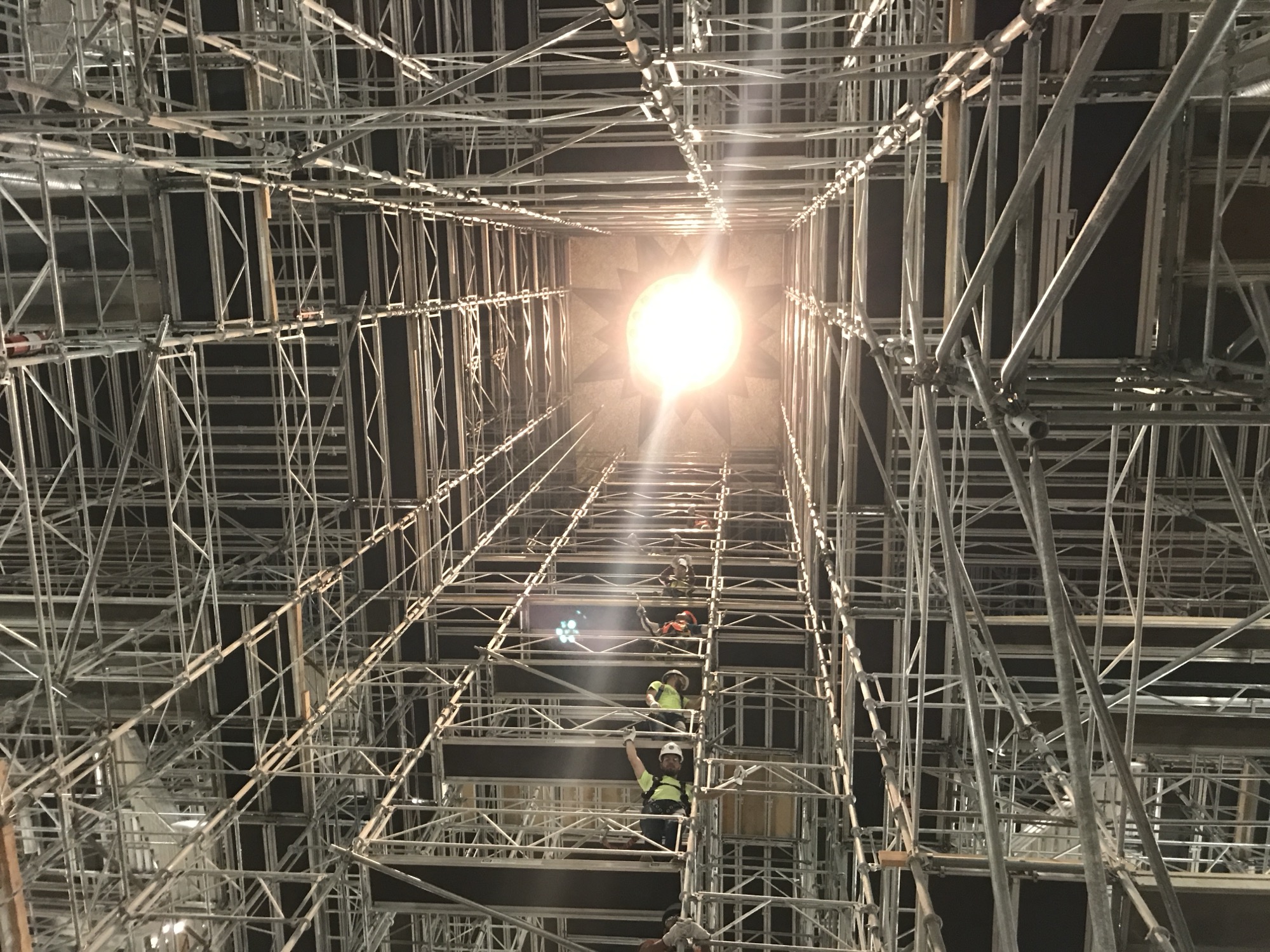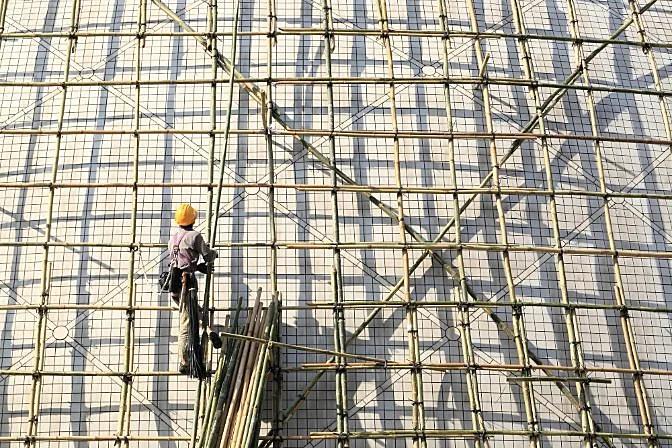Quality Scaffolding Surrey for Both Residential and Commercial Projects
Exploring the Numerous Sorts Of Scaffolding Made Use Of in Construction Projects
The construction market depends heavily on various types of scaffolding to fulfill particular task needs, each offering distinct advantages and applications. Typical frame scaffolding provides a sturdy structure for general tasks, while put on hold scaffolding is crucial for job on high-rise structures.

Typical Framework Scaffolding
Conventional framework scaffolding is among the most commonly made use of approaches in the building and construction market as a result of its effectiveness and convenience. This system contains upright and straight frameworks that are constructed to develop a secure system for employees and products. The primary components consist of vertical articles, horizontal journals, and angled braces, which with each other supply a strong framework that can support considerable tons.
One of the vital benefits of standard frame scaffolding is its adaptability to various construction projects, ranging from household structures to big industrial structures. The modular layout permits easy assembly and disassembly, making it reliable for both temporary and long-lasting projects. Furthermore, the system can be tailored in elevation and width, fitting different structure designs and website problems.
Safety is extremely important in scaffolding applications, and standard structure systems are furnished with guardrails and toe boards to protect against drops and ensure employee protection. Routine assessments and adherence to safety and security guidelines are crucial in preserving the stability of the scaffold (Scaffolding). On the whole, typical framework scaffolding remains an essential choice in the building industry, giving a trustworthy platform for labor and improving total job effectiveness

Suspended Scaffolding
Put on hold scaffolding provides an one-of-a-kind solution for building and construction projects that need access to raised surface areas, especially in scenarios where typical frame scaffolding might be impractical. This kind of scaffolding is generally put on hold from the roofing or top degrees of a framework, making use of a system of pulley-blocks, systems, and ropes to produce a working area that can be adapted to various elevations.
One of the key benefits of put on hold scaffolding is its flexibility. It can be easily repositioned or reduced to suit modifications in building and construction demands, making it optimal for tasks such as home window installation, frontage job, and upkeep on high-rise buildings. In addition, the minimal impact of suspended scaffolding enables for far better use ground space in metropolitan atmospheres, where space is often limited.
Security is an important consideration in the usage of suspended scaffolding. In general, suspended scaffolding offers a efficient and reliable service for accessing hard-to-reach areas in various construction circumstances, improving both efficiency and security on website.
System Scaffolding
System scaffolding, typically related to as a modern-day solution in the scaffolding industry, includes pre-engineered parts that can be rapidly constructed and adapted for his explanation different building and construction projects. Scaffolding. This kind of scaffolding is identified by its modular style, which enables versatility and effectiveness on task sites, accommodating architectural needs and various elevations
Normally made from high-strength steel or light weight aluminum, system scaffolding offers improved resilience and security. The elements include vertical posts, horizontal ledgers, and angled braces, which interconnect safely, making certain a robust framework. The design usually includes standardized installations, simplifying assembly and disassembly processes, thereby decreasing labor time and costs.

Rolling Scaffolding
Moving scaffolding is a functional alternative to standard fixed scaffolding, created for wheelchair and convenience of use on construction websites. This kind of scaffolding consists of a platform sustained by frameworks with wheels, enabling employees to quickly relocate it as required. The flexibility feature dramatically enhances efficiency, as it minimizes downtime connected with disassembling and setting up dealt with scaffolding.
Commonly built from lightweight products such as light weight aluminum or steel, rolling scaffolding offers a durable yet mobile service for jobs needing frequent repositioning - Scaffolding. It is specifically helpful in tasks such as painting, drywall installation, and electric job, where accessibility to numerous heights and places is necessary
Safety is paramount in rolling scaffolding style, with attributes such as locking wheels to avoid unintentional movement when in operation, and guardrails to safeguard employees from drops. Additionally, lots of designs are adjustable in height, fitting numerous task needs.
Cantilever Scaffolding

The layout of cantilever scaffolding typically involves utilizing brackets or scaffolding over conservatory arms secured to a structure or framework, enabling the system to prolong outside securely. Security is critical; hence, these scaffolds should be crafted to hold up against numerous loads and environmental problems. Routine anchor evaluation and maintenance are necessary to guarantee architectural stability and worker security.
Cantilever scaffolding is preferred for its adaptability and effective usage of area, making it a prominent option in urban atmospheres where area constraints are common. It facilitates much easier accessibility to high elevations, ultimately adding to the overall effectiveness of building projects. Similar to all scaffolding kinds, correct training and adherence to safety standards are crucial for workers utilizing cantilever scaffolding.
Final Thought
Typical structure scaffolding provides security, while suspended scaffolding provides adaptability for raised tasks. System scaffolding promotes quick assembly, and rolling scaffolding enhances wheelchair for varying work atmospheres.
Typical structure scaffolding supplies a sturdy foundation for general jobs, while suspended scaffolding is crucial for work on skyscraper frameworks.Moving scaffolding is a flexible alternative to conventional set scaffolding, created for flexibility and ease of usage on construction sites. As with all scaffolding types, appropriate training and adherence to safety and security requirements are crucial for employees using cantilever scaffolding.
Standard framework scaffolding provides stability, while suspended scaffolding provides versatility for raised tasks. System scaffolding promotes quick setting up, and rolling scaffolding enhances wheelchair for differing work atmospheres.